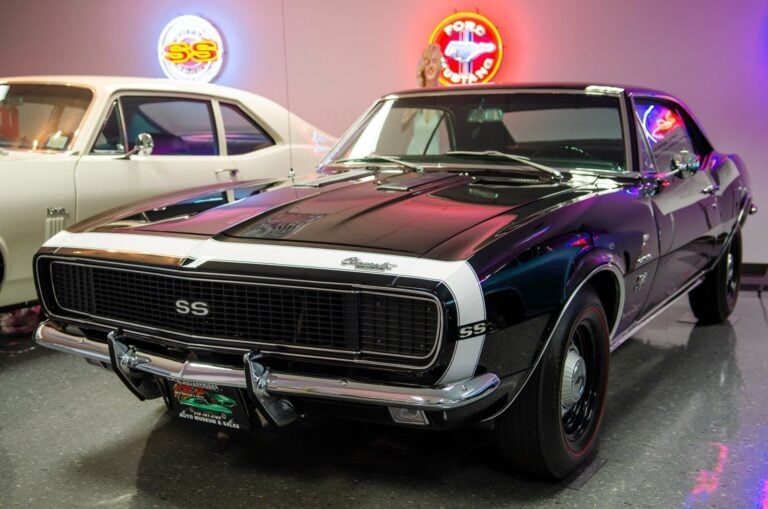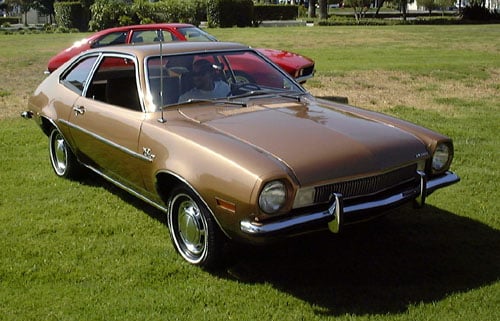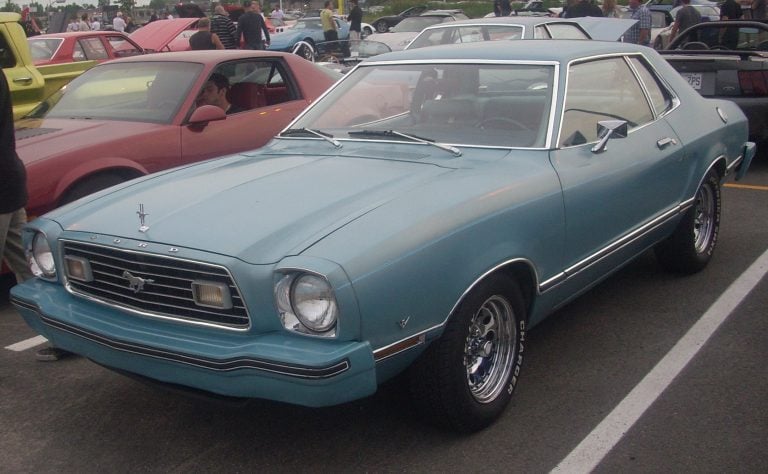30 Cars People Regret Buying the Most: Automotive Disappointments
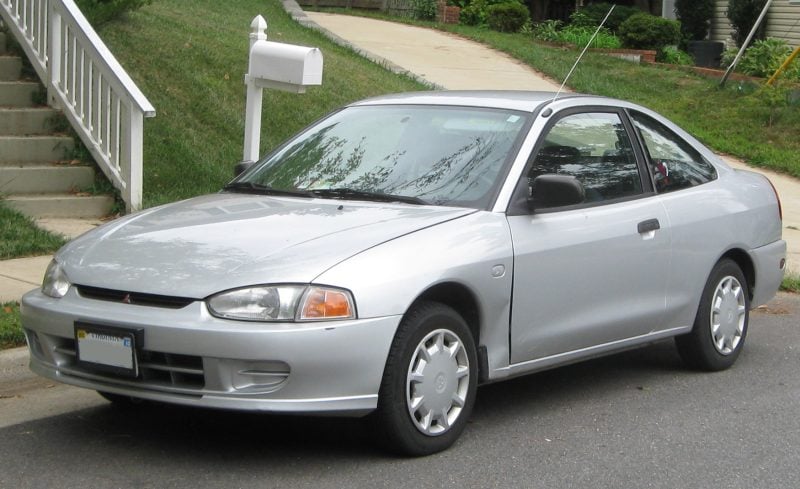
Buying a car ranks among the most significant financial decisions people make, yet many drivers find themselves wishing they had chosen differently.
Consumer Reports surveys and industry data reveal that certain vehicles consistently generate buyer’s remorse due to reliability issues, poor performance, or unmet expectations.
The vehicles that cause the most regret span multiple categories, from compact cars and SUVs to luxury models and electric vehicles. Understanding which specific models frequently disappoint owners can help future buyers make more informed decisions and avoid costly mistakes that could impact their daily driving experience and finances for years to come.
Here are 30 cars people regret buying the most:
1. Fiat 500
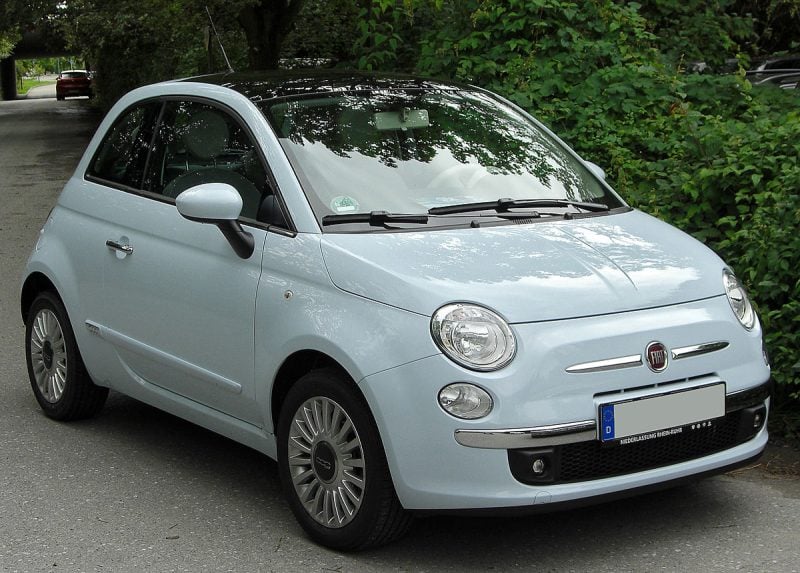
The Fiat 500 has earned an unfortunate reputation among car buyers. Many owners report significant regret after purchasing this Italian subcompact car.
Reliability issues plague the Fiat 500 across multiple model years. The car has become so associated with problems that it spawned the acronym “Fix It Again Tony” among frustrated owners.
Common complaints include electrical problems and transmission issues. The automatic transmission in particular has generated numerous owner complaints about performance and durability.
While the FIRE engine has remained relatively unchanged since the 1980s, this hasn’t translated to trouble-free ownership. Some owners report frequent trips to the repair shop for various mechanical issues.
The car’s retro styling and compact size initially attract buyers. However, the novelty often wears off quickly when reliability problems emerge, leaving many owners wishing they had chosen a different vehicle.
2. Jeep Compass
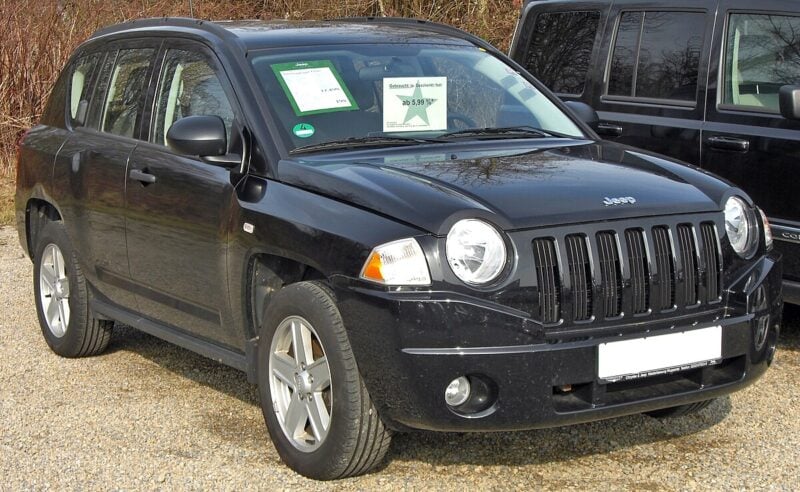
The Jeep Compass ranks as the most regretted small SUV according to Consumer Reports’ annual Owner Satisfaction Survey. Their research found that 42% of Compass owners would not purchase the same vehicle again.
Common complaints center around the vehicle’s weak acceleration and noisy cabin. Many owners report feeling cramped inside, particularly due to narrow front seats.
Visibility issues plague the Compass, with drivers struggling with difficult rearward views. The CVT and 9-speed automatic transmissions create additional problems with herky-jerky shifting patterns.
Some model years experience more severe transmission failures that can be catastrophic for owners. The combination of comfort issues and mechanical problems contributes to widespread buyer dissatisfaction.
Despite the Jeep brand’s popularity, the Compass consistently appears on lists of vehicles that cause the most post-purchase regret among consumers.
3. Chevrolet Trax
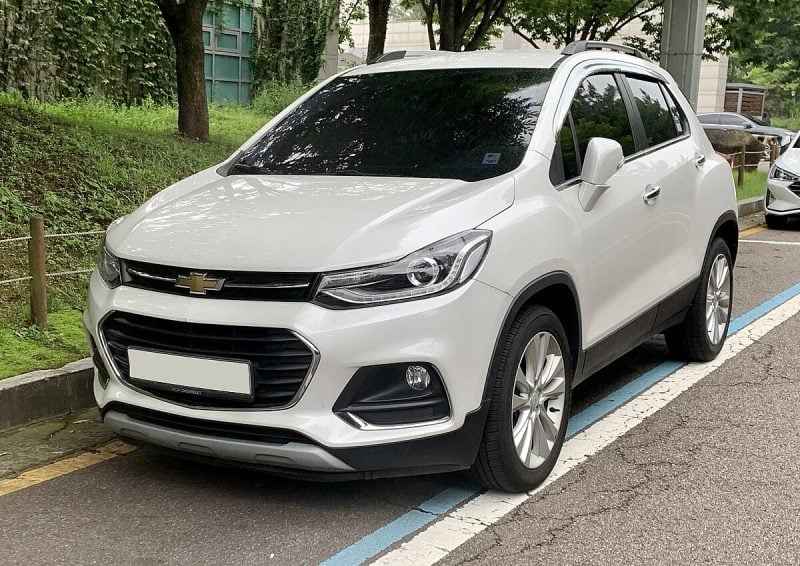
The Chevrolet Trax has become a source of buyer’s remorse for many owners. This subcompact SUV experienced significant quality issues during its early production years.
The 2016 model year stands out as particularly problematic. Owners reported complete engine failures, malfunctioning air conditioning systems, and widespread paint peeling issues.
The 2015-2018 model years are widely considered the worst for reliability. These vehicles suffered from transmission problems, electrical issues, and premature component failures.
Consumer Reports gave the 2017 Trax notably poor ratings. The vehicle received criticism for its poor build quality and numerous mechanical problems.
Many owners discovered expensive repair bills shortly after purchase. The cost of fixing these issues often exceeded the vehicle’s depreciated value.
The Trax’s reputation improved with later models, but early buyers faced significant disappointment. Many wish they had chosen more reliable alternatives in the competitive subcompact SUV market.
4. Ford Fiesta
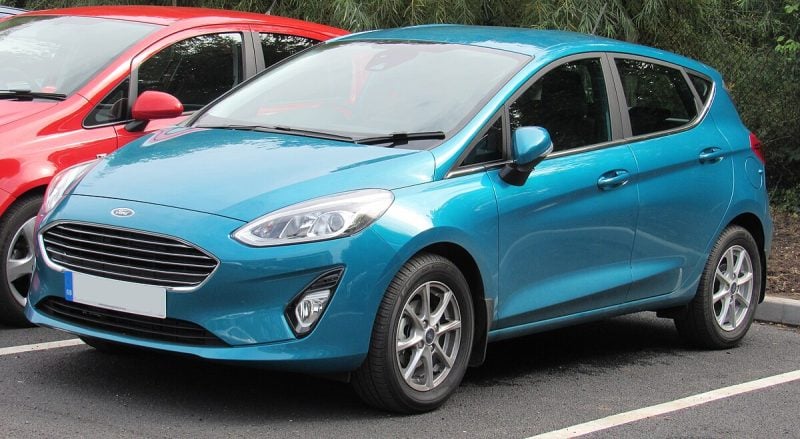
The Ford Fiesta became a significant source of buyer regret, particularly for models produced between 2011-2016. These earlier years suffered from widespread transmission problems that plagued owners throughout their ownership experience.
The automatic transmission proved especially problematic. Many owners reported severe stuttering, clutch failures, and transmission issues even at relatively low mileage around 60,000 miles.
Ford’s PowerShift dual-clutch automatic transmission generated countless complaints. Owners frequently found themselves dealing with costly repairs and extended time in service departments, even when vehicles remained under warranty.
The 2011-2015 model years received the worst ratings from consumers. These vehicles consistently ranked among the least reliable compact cars due to their mechanical issues and expensive repair costs.
Later model years from 2016-2019 showed improvement, but the damage to the Fiesta’s reputation was already established. The transmission problems made many buyers wish they had chosen different vehicles entirely.
5. Mitsubishi Mirage

The Mitsubishi Mirage attracts buyers with its low starting price and impressive fuel economy. However, many owners quickly discover why this bargain comes with significant drawbacks.
The vehicle’s reliability record varies dramatically by model year. The 2014, 2015, and 2017 models experienced particularly high rates of mechanical complaints and costly repairs.
Build quality remains a persistent concern across most years. The car’s interior materials feel cheap and flimsy, while road noise intrudes heavily into the cabin during highway driving.
Performance disappoints even by economy car standards. The three-cylinder engine struggles with acceleration, making highway merging and passing maneuvers challenging and potentially unsafe.
While newer models from 2018-2023 show improvement, the Mirage’s fundamental compromises in comfort, refinement, and driving dynamics leave many buyers wishing they had invested in a slightly more expensive alternative.
6. Nissan Versa

The Nissan Versa frequently appears on regret lists despite its affordable starting price. Many owners discover long-term ownership costs outweigh the initial savings.
Reliability issues plague certain model years. The 2007, 2009, 2012, 2015, and 2017-2018 versions have documented problems that frustrate buyers.
Common mechanical failures include malfunctioning Mass Air Flow sensors and worn catalytic converters. These repairs can be expensive for budget-conscious owners.
The CVT transmission creates additional concerns. This component has reliability issues across multiple Nissan models, including the Versa.
Build quality falls short of competitors in the subcompact segment. Owners often wish they had chosen more reliable alternatives like the Toyota Corolla or Honda Civic.
The low purchase price attracts buyers initially. However, maintenance costs and reliability problems make many regret their decision within a few years of ownership.
7. Jeep Renegade
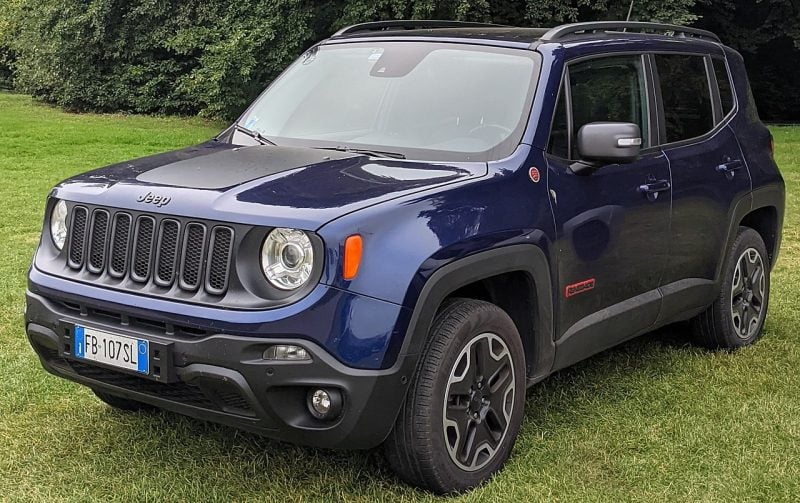
The Jeep Renegade consistently appears on buyer regret lists due to significant reliability concerns. Many owners report mechanical problems appearing within the first few years of ownership.
Built in Italy alongside the Fiat 500X, the Renegade shares its platform with the Italian subcompact. This marks the first Jeep product manufactured exclusively outside North America.
Consumer Reports data shows the Renegade scores poorly in owner satisfaction surveys. Many buyers express they would not purchase the same vehicle again.
Common complaints include electrical issues, transmission problems, and premature component failures. Some owners report problems beginning before the third year of ownership.
The vehicle’s reliability issues have led automotive experts to include it on lists of cars to avoid. Endurance Warranty specifically names the Renegade as an unreliable vehicle that buyers may regret purchasing long-term.
8. Chrysler 200

The Chrysler 200 consistently ranks among vehicles owners wish they hadn’t purchased. This midsize sedan was discontinued in 2017 due to poor sales and reliability concerns.
Certain model years proved particularly problematic. The 2015 and 2012 models experienced higher than average complaint rates from owners.
Common issues included transmission problems, electrical failures, and engine complications. These mechanical troubles often required expensive repairs that exceeded the vehicle’s value.
The 2011 and 2013 model years also generated significant owner dissatisfaction. Many buyers reported frequent breakdowns and poor build quality.
While later models like 2016 and 2017 showed some improvement, the overall reputation remained damaged. Consumer confidence never recovered from the earlier problematic years.
The combination of reliability issues and rapid depreciation made the Chrysler 200 a purchase many owners regretted shortly after buying.
9. Dodge Journey

The Dodge Journey consistently ranks among vehicles that generate the most buyer’s remorse. This mid-size crossover SUV has earned a reputation for disappointing owners across multiple model years.
Certain model years stand out as particularly problematic. The 2009, 2010, 2012, and 2014 Journey models have received the most complaints from owners.
The 2009 model year leads with over 3,000 complaints registered on automotive forums. Common issues include engine problems, transmission failures, and electrical malfunctions.
Reddit discussions frequently mention the Journey when users discuss regretful vehicle purchases. Many owners report feeling desperate to trade in their vehicles, even when financially underwater on their loans.
The Journey’s reliability issues span multiple mechanical systems. Engine troubles, transmission problems, and electrical failures create ongoing maintenance headaches for owners.
10. Tesla Model X

The Tesla Model X generates mixed feelings among owners, with some expressing significant regret over their purchase. Quality control issues plague many models, particularly the 2016-2018 years which are considered the worst to avoid.
Common complaints include persistent squeaking noises, falcon door malfunctions, and lengthy service wait times. Some owners report spending days at service centers for basic repairs.
The Model X’s premium price point exceeding $100,000 creates high expectations that many feel aren’t met. Build quality inconsistencies frustrate buyers who expect luxury-level fit and finish.
However, satisfaction isn’t universal disappointment. Many owners appreciate the charging network, autopilot features, and spacious interior. The 2023-2024 models show improvements in ride quality and overall refinement.
Service center accessibility remains a concern for many owners. Limited locations and appointment availability can leave owners without their vehicle for extended periods.
11. Jaguar XE
The Jaguar XE attracts buyers with its sleek design and luxury appeal. However, many owners quickly discover reliability issues that make them regret their purchase.
The worst model years to avoid are 2017 and 2018. These years experienced significant mechanical problems that frustrated owners.
Common issues include start/stop system failures occurring early in ownership. Some owners report problems arising after just 1,500 miles of driving.
Service quality from Jaguar dealerships compounds the frustration. Many owners describe poor customer service experiences when attempting repairs.
The XE’s interior design lacks distinctiveness compared to competitors. Ergonomics can feel awkward and unintuitive for daily use.
Jaguar’s limited service network creates additional challenges. Finding qualified technicians for repairs often proves difficult in many areas.
Long-term reliability concerns persist across multiple model years. These issues contribute to high ownership costs that exceed initial expectations.
12. Infiniti QX60
The Infiniti QX60 appears affordable among used luxury SUVs, but certain model years create significant buyer regret. This three-row crossover shares its platform with the Nissan Pathfinder.
The worst years to avoid are 2014, 2015, and 2017. These models suffered from problematic CVT transmissions that caused frequent breakdowns and expensive repairs.
Early QX60 models experienced transmission failures, electrical issues, and poor build quality. The 2014 debut year was particularly troublesome as Infiniti worked through initial production problems.
Many owners report costly repairs that exceed the vehicle’s value. The CVT transmission remains the primary concern, with replacement costs reaching thousands of dollars.
While newer models show improvement, the QX60’s reputation for reliability issues makes buyers hesitant. Used models from problematic years continue disappointing owners with unexpected repair bills.
13. Ford Focus
The Ford Focus ranks among vehicles that frequently disappoint owners despite being one of Ford’s best-selling models. Many buyers experience significant reliability issues that lead to purchase regret.
Certain model years prove particularly problematic. The 2012-2014, 2016, and 2018 Focus models show the highest rates of owner dissatisfaction due to recurring mechanical problems.
Transmission failures represent the most common complaint among Focus owners. The dual-clutch automatic transmission in many models develops issues that create jerky shifting and complete breakdowns.
Electrical problems also plague multiple Focus generations. Owners report frequent issues with power windows, door locks, and dashboard electronics that require costly repairs.
While some model years like 2009-2011 perform better, the Focus’s reputation for reliability problems causes many owners to regret their purchase decision.
14. Volkswagen Tiguan
The Volkswagen Tiguan disappoints many owners despite its initial appeal. This compact SUV attracts buyers with its upscale interior and stylish design.
Performance proves to be a major letdown. The powertrain lacks power and feels sluggish during acceleration. Drivers coming from sportier vehicles find the difference particularly jarring.
Reliability issues plague certain model years. Common problems include turbo failure and timing chain issues. These mechanical failures lead to expensive repair bills.
The 2010-2011 and 2012-2014 model years present the most problems. These years show lower reliability scores and higher maintenance costs than average.
While the Tiguan offers good handling and a quiet interior, the combination of poor performance and reliability concerns leaves many buyers feeling disappointed with their purchase decision.
15. Cadillac ATS
The Cadillac ATS frequently appears on lists of luxury vehicles to avoid due to poor reliability ratings and low owner satisfaction scores. Many buyers experience regret after purchasing this compact luxury sedan.
Early model years from 2013-2015 present the most problems for owners. These vehicles suffer from transmission issues, electrical problems, and premature component failures that result in costly repairs.
The 2016 model year showed improvement over earlier versions. However, the ATS still struggles with long-term reliability compared to German competitors it was designed to challenge.
Consumer Reports has specifically highlighted the ATS as a used luxury car to avoid. The vehicle’s reputation for frequent breakdowns and expensive maintenance makes it a risky purchase for most buyers.
Despite sporty handling and upscale features, the ATS’s reliability issues overshadow its positive attributes. Many owners find themselves facing unexpected repair bills that exceed the car’s value.
16. BMW X3
The BMW X3 has several model years that cause significant regret among owners. The 2011, 2013, and 2015 models stand out as particularly problematic choices.
Engine and drivetrain issues plague certain X3 years. The 2011 xDrive28i and 2013 models experience recurring mechanical problems that lead to expensive repairs.
Recent models aren’t immune to issues either. Some 2023 X3 M40i owners report broken rear differentials and cracked oil pans requiring lengthy repair times.
Parts availability creates additional frustration. Owners sometimes wait months for components shipped from Germany while their vehicles sit in repair shops.
The worst X3 years include 2004, 2005, 2006, 2007, 2008, 2011, 2013, 2015, and 2019. These models have documented reliability problems that affect long-term ownership satisfaction.
Better alternatives exist within the X3 lineup, including 2009, 2010, 2012, 2014, and most recent years excluding the problematic ones mentioned.
17. Subaru WRX
The Subaru WRX attracts performance enthusiasts but often leaves owners disappointed. Many buyers discover the car’s reliability issues after purchase.
RepairPal rates the WRX at 3.5 out of 5.0 for reliability. It ranks 32nd out of 36 compact cars, making it one of the least reliable in its class.
Certain model years prove particularly problematic. The 2015, 2016, 2017, and 2018 WRX models have garnered negative feedback from owners due to various mechanical issues.
Used WRX models often come with hidden problems. Previous owners may have modified or abused these performance cars, leading to expensive repairs.
The WRX’s harsh ride quality and road noise disappoint daily commuters. Features that seem exciting on paper become tiresome in real-world driving conditions.
Higher maintenance costs compared to standard sedans catch many owners off guard. Performance parts and specialized service requirements add to ownership expenses.
18. Honda HR-V
The Honda HR-V generates significant buyer remorse due to persistent reliability issues and disappointing performance. Many owners report frustration with the vehicle’s problematic early model years.
The 2016-2019 model years are particularly troublesome. These versions suffer from widespread electrical system failures, brake problems, and fuel system issues that often appear at low mileage.
Common complaints include screen malfunctions and electronic glitches that distract from the driving experience. The HR-V’s reliability problems contradict Honda’s reputation for dependable vehicles.
Buyers frequently express regret over high purchase prices that don’t match the vehicle’s actual value. Many dealers refuse to negotiate below $30,000, creating additional frustration for potential owners.
The subcompact crossover fails to deliver the smooth driving experience buyers expect from Honda. Safety concerns and frequent repair needs make the HR-V a purchase many wish they could undo.
19. Hyundai Santa Fe
The Hyundai Santa Fe attracts buyers with its affordable price point and spacious interior. Many families choose it as a practical midsize SUV option.
However, certain model years have created significant problems for owners. The 2007, 2009, 2012, 2013, and 2017 models are particularly problematic.
Transmission failures plague these worst years. Engine stalling issues also occur frequently in problematic models.
Air conditioning problems affect many Santa Fe owners. These issues often require expensive repairs that surprise buyers.
The Santa Fe’s reputation varies dramatically by model year. While newer models from 2018 onward perform better, earlier problematic years continue to frustrate owners.
Buyers who purchased during the worst years often face unexpected maintenance costs. These expenses can quickly exceed the initial savings from the lower purchase price.
20. Kia Soul
The Kia Soul’s polarizing boxy design attracts some buyers but leaves others disappointed after purchase. Many owners report feeling the styling becomes tiresome over time.
Engine problems plague certain model years, particularly 2012-2016 models. These years experienced serious recalls and costly mechanical failures that frustrated owners.
The 2012 and 2013 model years represent the worst generations for reliability. These vehicles suffered from multiple engine-related issues that required expensive repairs.
Road noise and harsh ride quality disappoint buyers expecting better comfort. The Soul’s design prioritizes style over refinement, leading to regret among comfort-focused drivers.
Limited cargo space despite the boxy exterior frustrates practical buyers. The interior doesn’t maximize the available space as effectively as competing vehicles.
Recent model years show improvement in reliability and performance. However, earlier generations continue to generate regret among used car buyers who encounter persistent mechanical problems.
21. Mazda CX-5
The Mazda CX-5 generates mixed feelings among owners, with some expressing buyer’s remorse over specific issues. Fuel economy stands out as a primary complaint, particularly for owners who expected better mileage from their purchase.
Certain model years present more problems than others. The 2018, 2016, 2014, and 2013 models have reported more reliability issues compared to newer versions.
Some buyers regret not choosing a different trim level. Touring owners sometimes wish they upgraded to Grand Touring, while others question whether the base Sport model would have been sufficient.
The CX-5’s rear seat space can disappoint families with car seats. Parents often find the cargo area cramped when accommodating child safety equipment and other family necessities.
Despite these concerns, many owners remain satisfied with their purchase. The vehicle’s build quality and handling characteristics help offset common complaints for numerous drivers.
22. Toyota Highlander Hybrid
Many Toyota Highlander Hybrid owners express regret about their purchase, particularly those who bought early models. The 2008 model year received the most complaints from consumers.
First-generation models from 2006-2010 suffered from persistent brake problems and unintended acceleration issues. These safety concerns created ongoing headaches for owners who expected Toyota’s typical reliability.
The 2006 and 2008 model years are consistently identified as the worst choices. Buyers faced expensive repairs and frustrating experiences with these particular years.
Even newer models have disappointed some owners. One 2024 Highlander Hybrid owner reported significant problems with Android Auto connectivity after upgrading from a 2021 model that worked properly.
The hybrid system, while offering good fuel economy, has introduced additional complexity that can lead to costly repairs when components fail.
23. Chevrolet Bolt EV
The Chevrolet Bolt EV consistently ranks among vehicles that owners regret purchasing. Despite its affordable price point and decent electric range, the Bolt faces significant reliability issues.
Battery-related fires represent the most serious concern. These problems led to major recalls in 2020 and 2021, affecting thousands of vehicles nationwide.
Owner complaints about the 2023 Bolt EV exceed those of any other Chevrolet model. Many buyers report poor dealership service experiences when seeking repairs.
Consumer Reports advises avoiding 2019-2022 Bolt models due to higher-than-average problem rates. The vehicle’s lithium-ion battery system continues to generate safety concerns.
While the Bolt offers good build quality in some areas, its battery issues overshadow these positives. Many owners express regret over their purchase decision, particularly given the service difficulties they encounter.
24. Volkswagen Beetle
The Volkswagen Beetle’s reputation for reliability issues makes it a common source of buyer regret. Models produced between 1998 and 2010 experienced significant electrical problems and transmission failures that required frequent repairs.
Many owners discovered these maintenance costs quickly exceeded their initial budget expectations. The electrical systems proved particularly problematic, causing unexpected breakdowns and expensive diagnostic procedures.
Transmission issues also plagued these model years, leading to costly replacements or rebuilds. These problems often appeared after the warranty period ended, leaving owners responsible for substantial repair bills.
Despite the Beetle’s iconic design and nostalgic appeal, the practical reality of ownership disappointed many buyers. The combination of high repair frequency and expensive parts created ongoing financial stress for owners who expected reliable daily transportation.
25. Ram 1500
The Ram 1500 generates mixed feelings among truck owners. Some buyers experience satisfaction with the vehicle’s performance and features.
However, several owners report regrets about their purchase. The 8-speed transmission receives frequent complaints for feeling unrefined and hesitating during acceleration.
Transmission issues include clunking during downshifts and a slipping sensation. These problems often develop over time and concern owners about long-term reliability.
Certain model years prove more problematic than others. The 2011-2014 Ram 1500s show higher rates of reported issues compared to newer models.
Engine problems also contribute to buyer regret. Exhaust manifold failures occur in some units, leading to expensive repairs.
Recent model years from 2017 onward demonstrate improved quality ratings. These newer trucks receive better consumer satisfaction scores than earlier generations.
26. GMC Acadia
The GMC Acadia consistently ranks among vehicles buyers regret purchasing most. Multiple model years suffer from significant reliability issues that leave owners frustrated.
The 2008, 2012, and 2017 model years present the most problems. These vehicles experience frequent transmission failures, airbag system malfunctions, and fuel pump issues.
Owners report expensive repair costs that often exceed the vehicle’s value. Many buyers discover these problems shortly after purchase, leading to immediate regret.
The crossover’s reputation for unreliability stems from documented mechanical failures across multiple generations. Consumer feedback reveals widespread dissatisfaction with repair frequency and costs.
Even newer models haven’t escaped criticism. Buyers frequently encounter unexpected maintenance expenses that strain budgets beyond the monthly payment.
The Acadia’s poor reliability record makes it a purchase many owners wish they could reverse.
27. Ford EcoSport
The Ford EcoSport ranks among the most regretted compact SUV purchases. Consumer Reports data shows this discontinued model consistently disappoints owners.
The three-cylinder engine delivers underwhelming performance. Acceleration takes over 10 seconds to reach 60 mph, making highway merging challenging.
Interior space feels cramped for its class. The cabin lacks the roominess buyers expect from an SUV, even a compact one.
Fuel economy fails to meet expectations. Despite the small engine, gas mileage disappoints compared to competitors.
Transmission problems plague multiple model years. Some owners report transmission failures occurring multiple times within 115,000 miles.
Build quality feels cheap throughout. The overall construction doesn’t match Ford’s typical standards, contributing to buyer dissatisfaction.
The worst model years are 2018 and 2019. Later years showed improvement, but the EcoSport’s reputation remained damaged until Ford discontinued it.
28. Nissan Juke
The Nissan Juke divides opinion with its polarizing design and reliability concerns. Many owners report significant mechanical problems that lead to costly repairs.
Early model years from 2011-2013 present the most issues. These vehicles commonly experience turbo failures, timing chain problems, and transmission defects.
The 2011 model year suffers from turbo and timing chain complications. These engine problems often require expensive repairs that exceed the vehicle’s value.
Transmission issues plague the 2013 model year. Owners report erratic shifting, complete transmission failure, and difficulty finding replacement parts.
Air conditioning problems affect 2014-2015 models. The AC system frequently fails, leaving drivers without climate control in hot weather.
Former Juke owners consistently describe their vehicles as unreliable when switching to other brands. The combination of mechanical problems and high repair costs creates buyer regret.
29. Hyundai Elantra
The Hyundai Elantra draws buyers with its affordable price point and decent fuel economy. However, certain model years have left owners disappointed with reliability issues.
The 2013 model year stands out as particularly problematic. This generation experienced significant safety concerns that affected owner confidence.
Electrical problems plague the 2016 Elantra despite its attractive design. Many owners reported issues with the infotainment system and battery performance.
The 2009, 2010, 2012, and 2017 model years also present reliability challenges. These years consistently appear on avoid lists due to various mechanical problems.
Engine troubles and transmission issues affect multiple generations. Some owners face expensive repairs relatively early in ownership.
While newer Elantra models show improvement, the problematic years continue to impact the vehicle’s reputation. Buyers often discover these issues after purchase, leading to regret about their decision.
30. Mini Cooper
Many Mini Cooper owners experience buyer’s remorse due to the vehicle’s cramped interior space. The small cabin leaves little room for passengers and cargo, making daily use challenging for some drivers.
Reliability issues plague certain model years, particularly affecting owner satisfaction. Engine problems and electrical failures have been reported across multiple generations of the vehicle.
Higher maintenance costs compared to other small cars catch many buyers off guard. Parts and service expenses often exceed expectations for what appears to be an affordable compact car.
The firm suspension and minimal sound insulation create a harsh ride quality on rough roads. This can become tiresome during longer commutes or highway driving.
Storage limitations make the Mini Cooper impractical for families or those needing regular cargo space. The small trunk and limited interior storage disappoint buyers who underestimate these constraints.
Common Reasons for Car Buyer’s Remorse
Vehicle owners frequently experience regret due to unexpected maintenance expenses, poor fuel economy, rapid depreciation, and comfort issues that weren’t apparent during the initial purchase process.
Unexpected Maintenance Costs
Many car buyers underestimate the true cost of ownership beyond the monthly payment. Luxury vehicles often require specialized parts and certified technicians, making routine maintenance significantly more expensive than expected.
Premium brands like BMW, Mercedes-Benz, and Audi typically charge $150-300 per hour for labor rates. Oil changes alone can cost $100-200 for synthetic oil requirements.
European vehicles frequently need specific tools and diagnostic equipment that only dealerships possess. This creates a monopoly on service that drives up costs substantially.
Common surprise expenses include:
- Brake pad replacements ($400-800)
- Transmission services ($200-500)
- Air suspension repairs ($1,500-3,000)
- Timing belt replacements ($800-1,500)
Warranty coverage often excludes wear items like tires, brakes, and batteries. These components can fail within the first few years of ownership, creating unexpected financial burdens.
Poor Fuel Efficiency
EPA estimates rarely match real-world driving conditions. Many owners discover their vehicle’s actual fuel consumption is 20-30% higher than advertised ratings.
Large SUVs and trucks often deliver disappointing fuel economy in city driving. Stop-and-go traffic, short trips, and cold weather significantly reduce efficiency compared to highway testing conditions.
Performance vehicles with turbocharged engines may require premium fuel, adding $300-500 annually to fuel costs. This requirement isn’t always clearly communicated during the sales process.
Factors affecting real-world fuel economy:
- Aggressive driving habits
- Frequent short trips
- Cold weather operation
- Cargo weight and roof accessories
- Tire pressure and condition
Hybrid vehicles can disappoint buyers when electric-only range proves insufficient for daily needs. The gasoline engine runs more frequently than expected, reducing overall efficiency benefits.
Depreciation and Resale Value
New vehicles lose approximately 20-30% of their value within the first year. This immediate depreciation shock affects buyers who need to sell or trade quickly.
Luxury vehicles often depreciate faster than mainstream brands. Models with high initial prices but limited demand experience steeper value drops, sometimes losing 50-60% within three years.
Vehicles with poor resale value typically include:
- Limited production specialty cars
- Models with reliability issues
- Vehicles with discontinued support
- Cars with outdated technology
Electric vehicles face unique depreciation challenges due to rapidly improving technology. Battery degradation concerns and federal tax credit eligibility changes affect resale values unpredictably.
Lease-to-purchase decisions often result in negative equity situations. Buyers discover they owe more than the vehicle’s current market value when attempting to exit early.
Comfort and Ergonomics Issues
Short test drives rarely reveal long-term comfort problems. Issues like seat support, road noise, and visibility become apparent only after extended daily use.
Common comfort complaints include:
- Inadequate lumbar support causing back pain
- Poor seat cushioning on long drives
- Excessive wind or road noise
- Limited headroom or legroom
- Awkward control placement
Technology interfaces that seem intuitive initially can become frustrating with regular use. Complex infotainment systems and touch-sensitive controls often prove less user-friendly than traditional buttons and knobs.
Ride quality compromises become evident over time. Vehicles with sport-tuned suspensions may feel harsh on damaged roads, while comfort-oriented setups can feel unstable during spirited driving.
Climate control effectiveness varies significantly between vehicles. Poor air conditioning performance or inadequate heating can make daily commutes uncomfortable, especially in extreme weather conditions.
How to Avoid Regrettable Car Purchases
Research reveals that 34% of car buyers regret their purchase decisions. Smart buyers can avoid this costly mistake by conducting thorough research, understanding total ownership costs, taking comprehensive test drives, and reading long-term ownership reviews.
Conducting Thorough Vehicle Research
Buyers should start by defining their actual needs versus wants. A family of four needs different features than a single commuter.
Research multiple sources including manufacturer specifications, automotive publications, and owner forums. Professional reviews provide technical details, while owner forums reveal real-world experiences.
Compare similar models within the same price range. Create a spreadsheet listing features, prices, and ratings for each vehicle under consideration.
Check reliability ratings from Consumer Reports and J.D. Power. These organizations track long-term dependability data across thousands of vehicles.
Research recalls and common problems for specific model years. The National Highway Traffic Safety Administration database contains recall information and safety ratings.
Verify parts availability and service network coverage. Some brands have limited dealer networks, making repairs more expensive and time-consuming.
Understanding Ownership Costs
Purchase price represents only the beginning of car ownership expenses. Smart buyers calculate total cost of ownership over their planned ownership period.
Insurance costs vary significantly between models. Contact insurance providers for quotes before purchasing. Sports cars and luxury vehicles typically cost more to insure.
Fuel economy directly impacts long-term expenses. A car averaging 20 mpg versus 30 mpg costs $500 more annually in fuel for drivers covering 15,000 miles.
Maintenance schedules and costs differ between brands. European luxury cars often require expensive synthetic oils and specialized parts.
Research depreciation rates for specific models. Some vehicles retain value better than others, affecting resale or trade-in values.
Factor in potential repair costs after warranty expiration. Reliable brands typically cost less to maintain long-term.
Importance of Test Drives
Test drives should occur under various conditions, not just around the dealer lot. Drive in city traffic, on highways, and in parking lots.
Test all planned use scenarios. Families should test car seats and cargo space. Commuters should evaluate comfort during longer drives.
Pay attention to visibility, seat comfort, and control placement. These factors significantly impact daily driving satisfaction.
Evaluate technology interfaces while parked. Infotainment systems that seem intuitive in showrooms may prove frustrating during regular use.
Test drive during different times of day if possible. Traffic conditions and lighting can reveal issues not apparent during initial visits.
Bring family members who will regularly use the vehicle. Their comfort and preferences matter for long-term satisfaction.
Reading Long-Term Reviews
Owner satisfaction surveys from Consumer Reports provide valuable insights beyond initial impressions. These surveys track satisfaction over several years of ownership.
Focus on reviews from owners who have driven the vehicle for at least one year. Initial reviews may miss problems that develop over time.
Look for patterns in complaints across multiple review sources. Consistent issues mentioned by numerous owners indicate potential problems.
Read both positive and negative reviews to understand common praise and criticism. This balanced approach reveals the vehicle’s strengths and weaknesses.
Pay attention to reviews from owners with similar driving patterns and needs. A review from a weekend driver may not apply to daily commuters.
Check automotive forums for discussions about specific model years. Owners often share detailed experiences about repairs, maintenance, and satisfaction.


